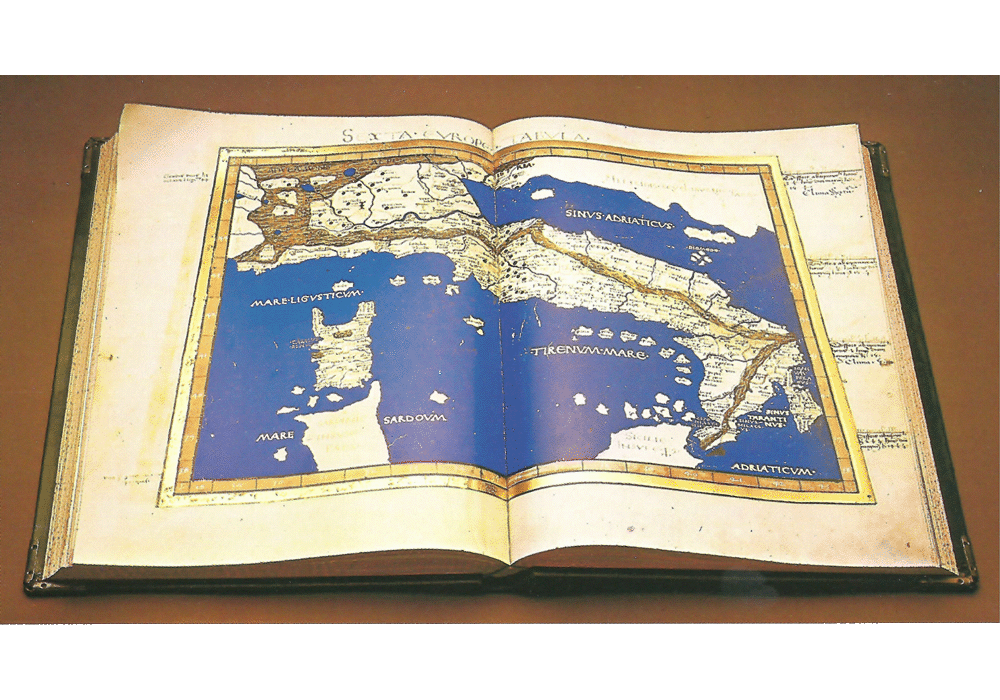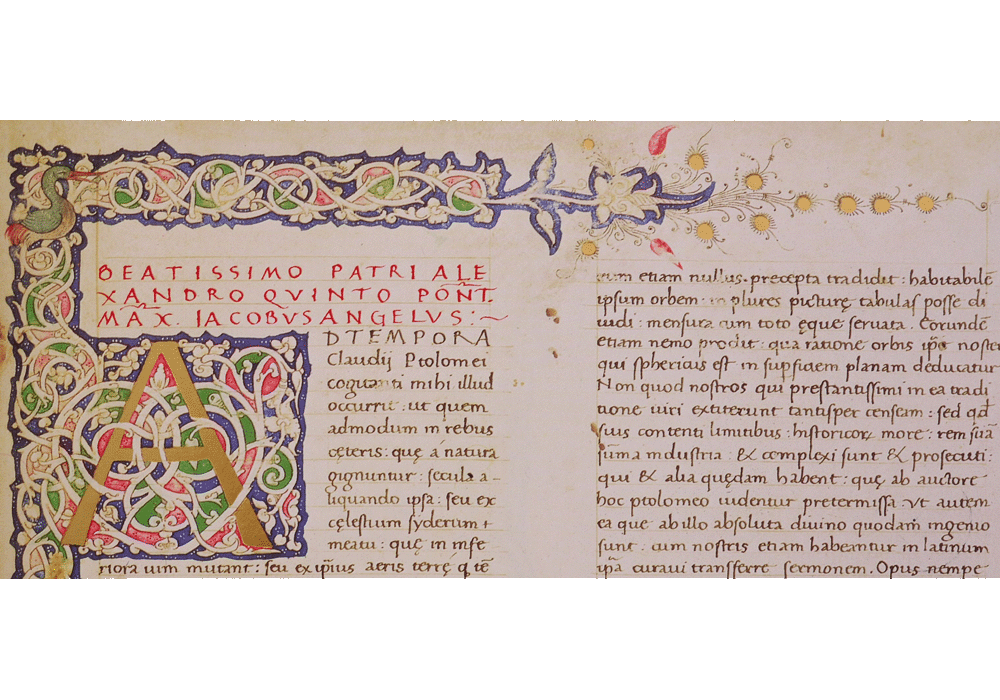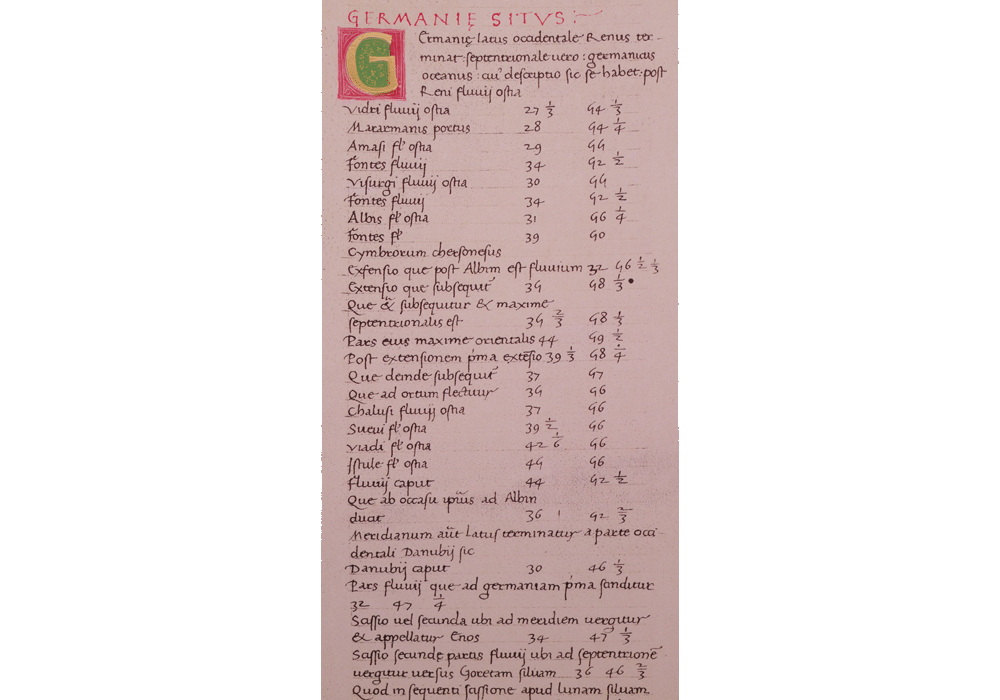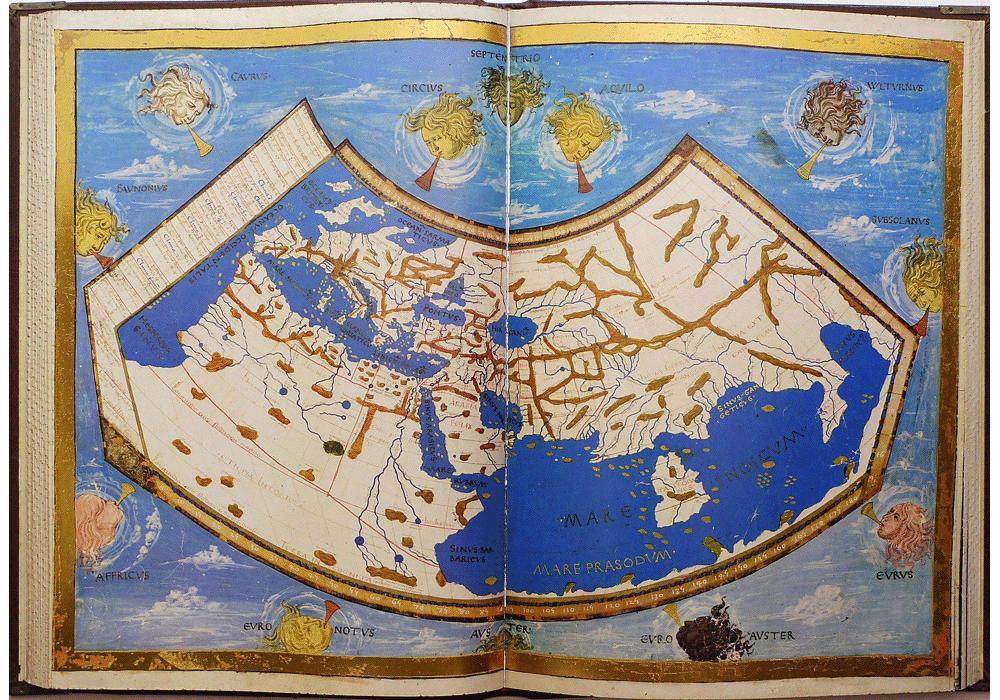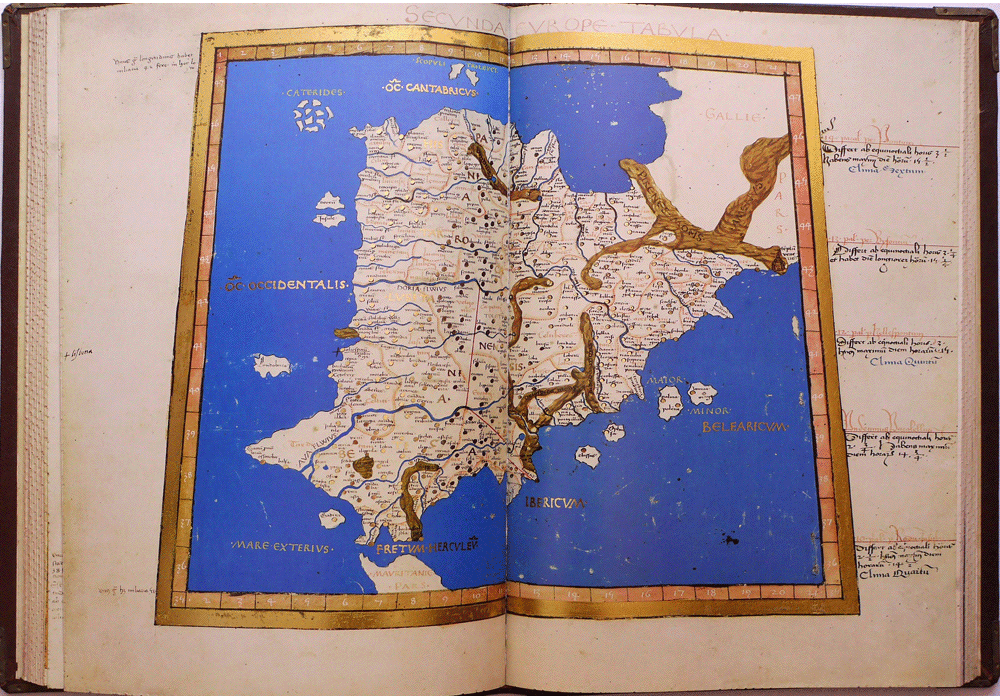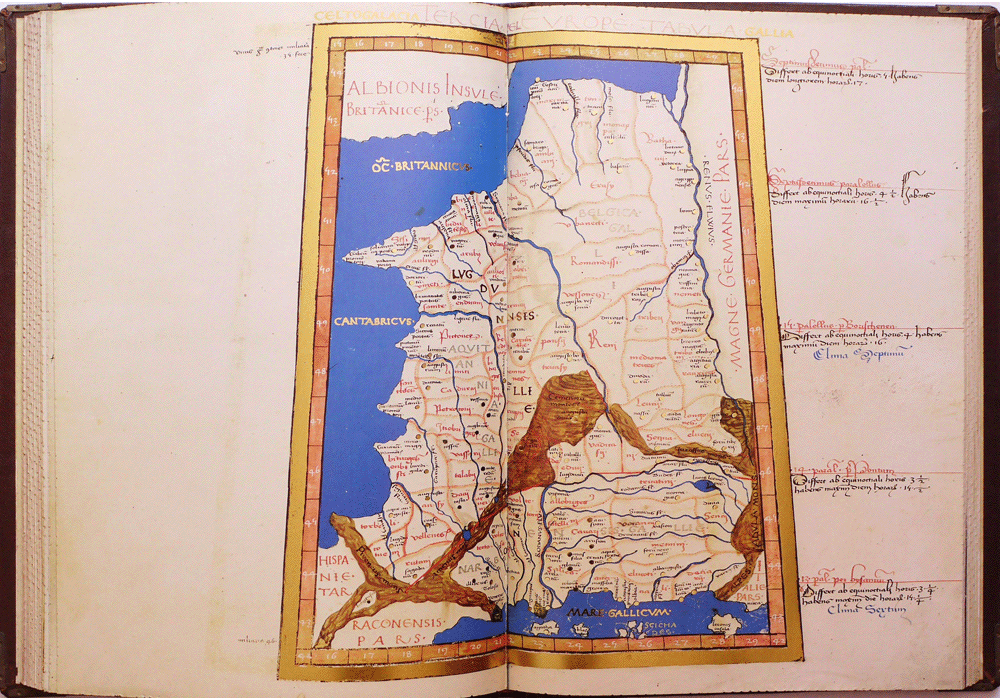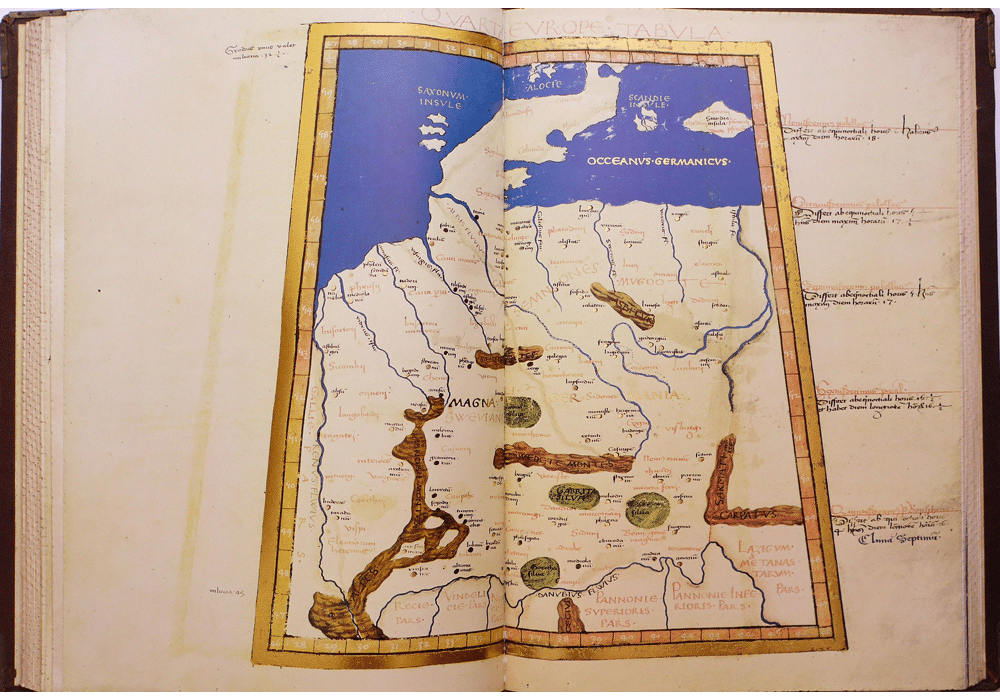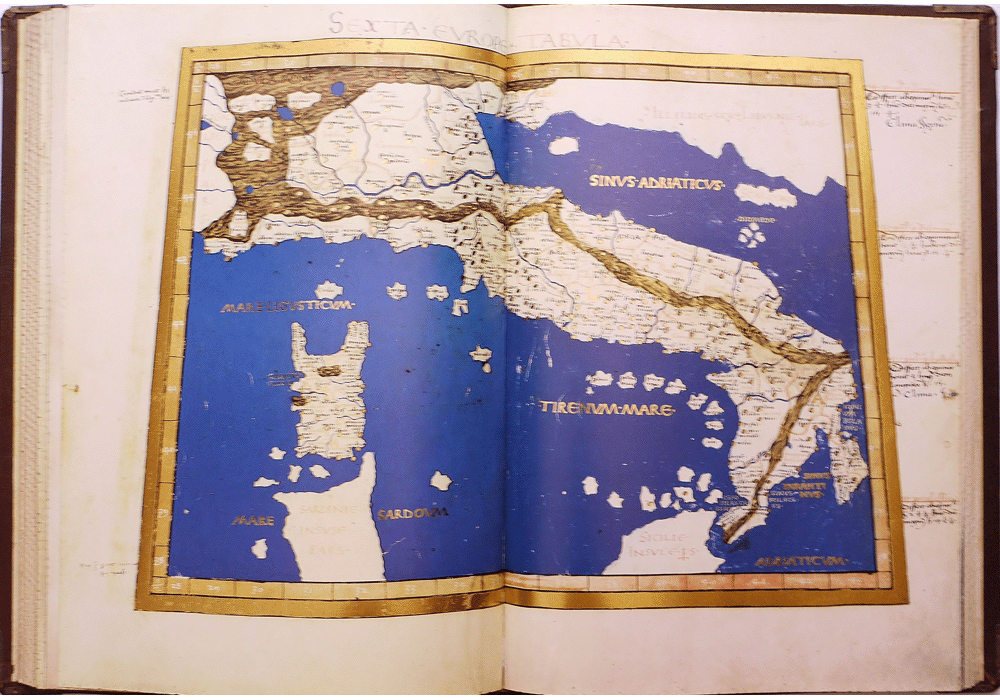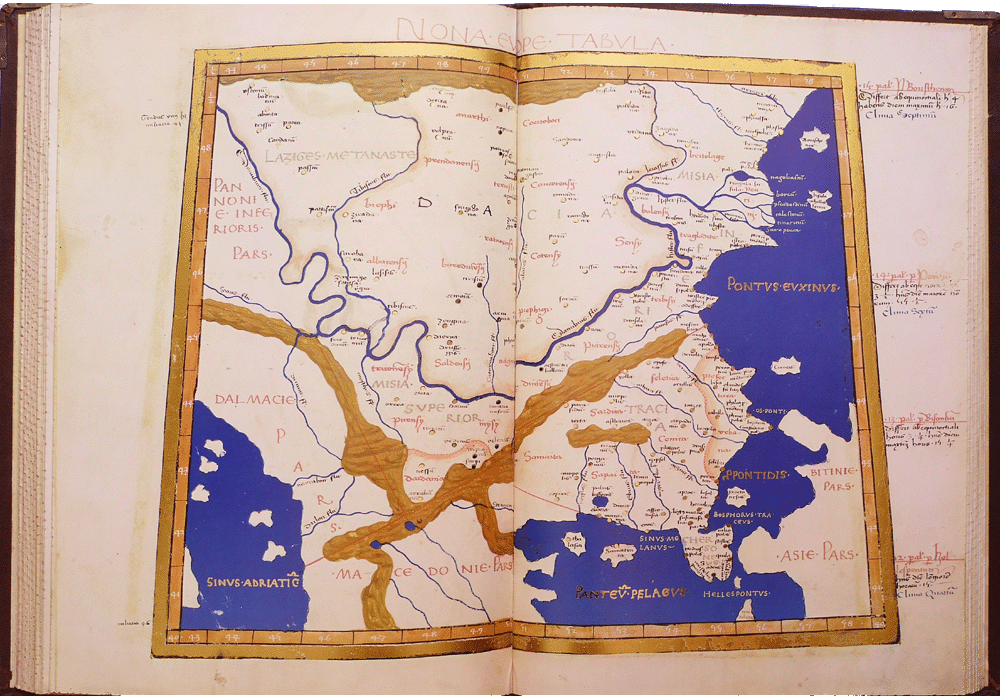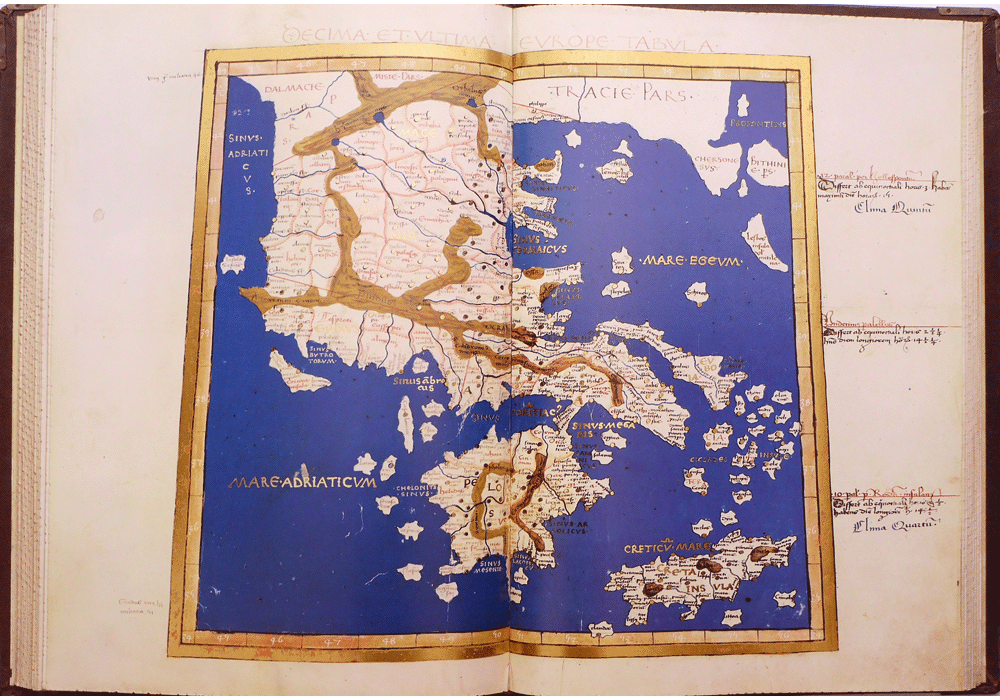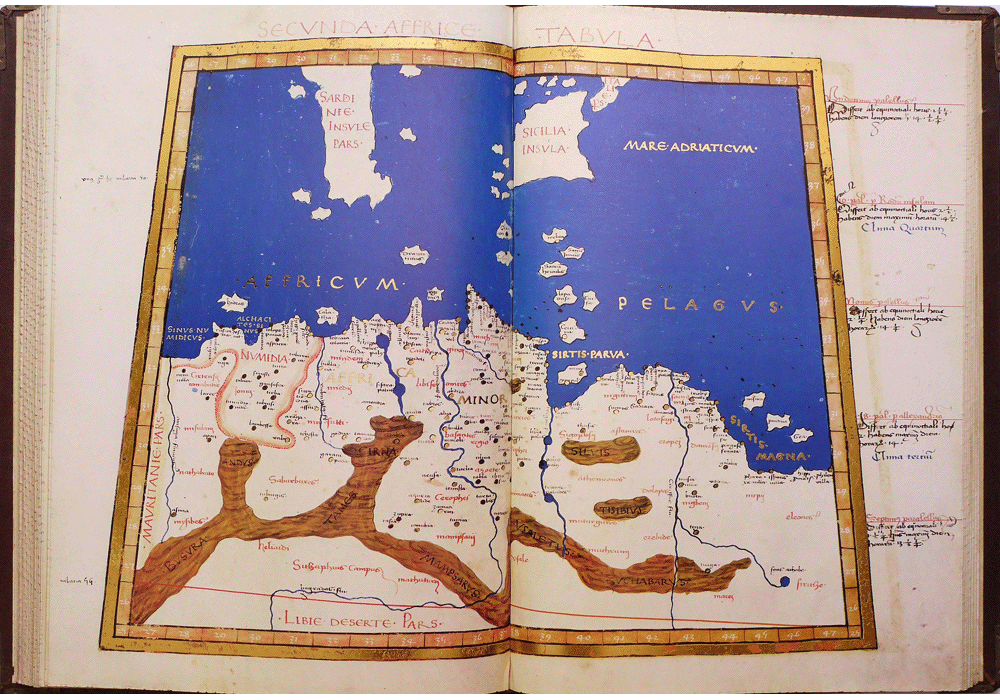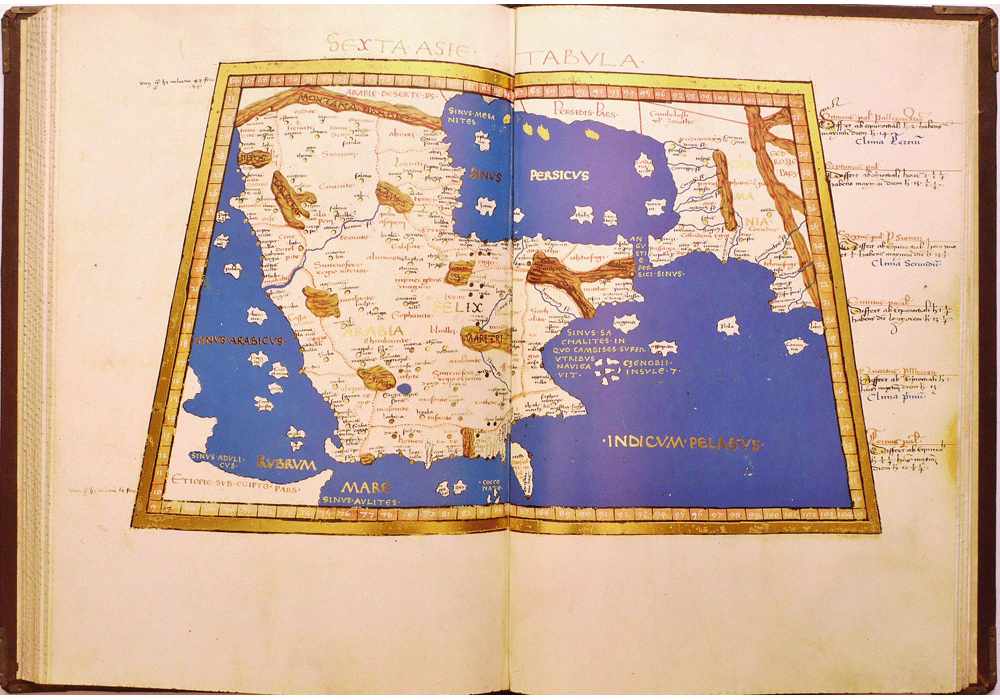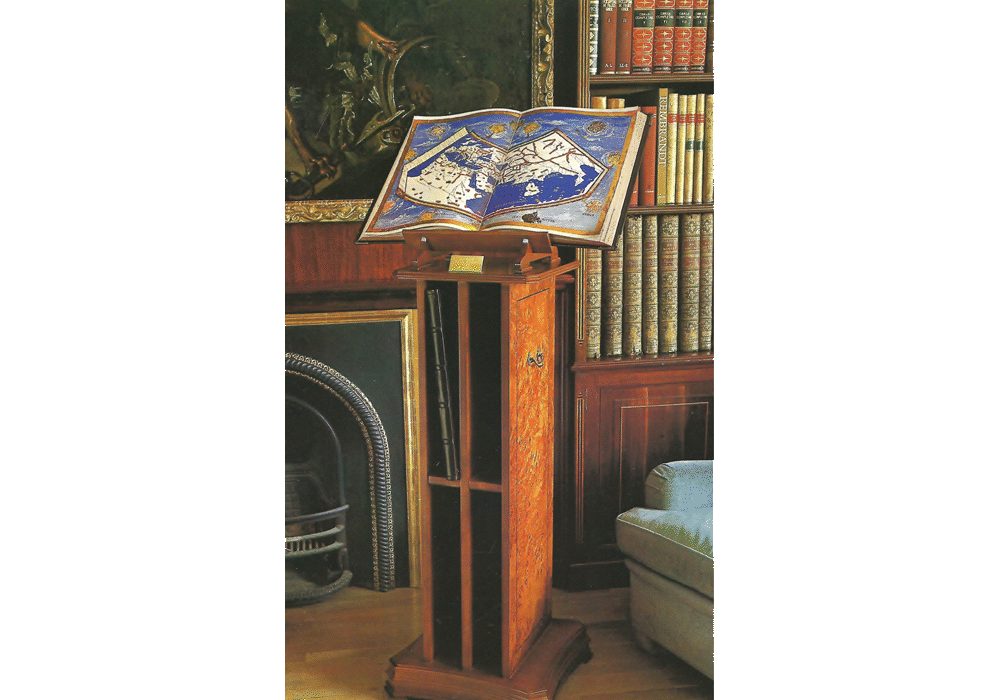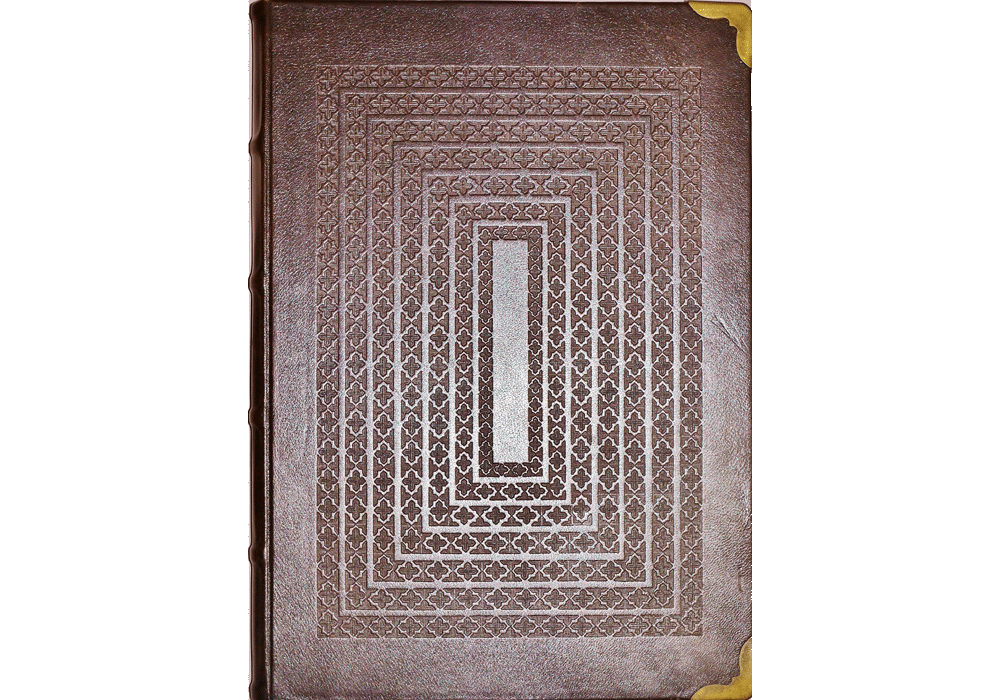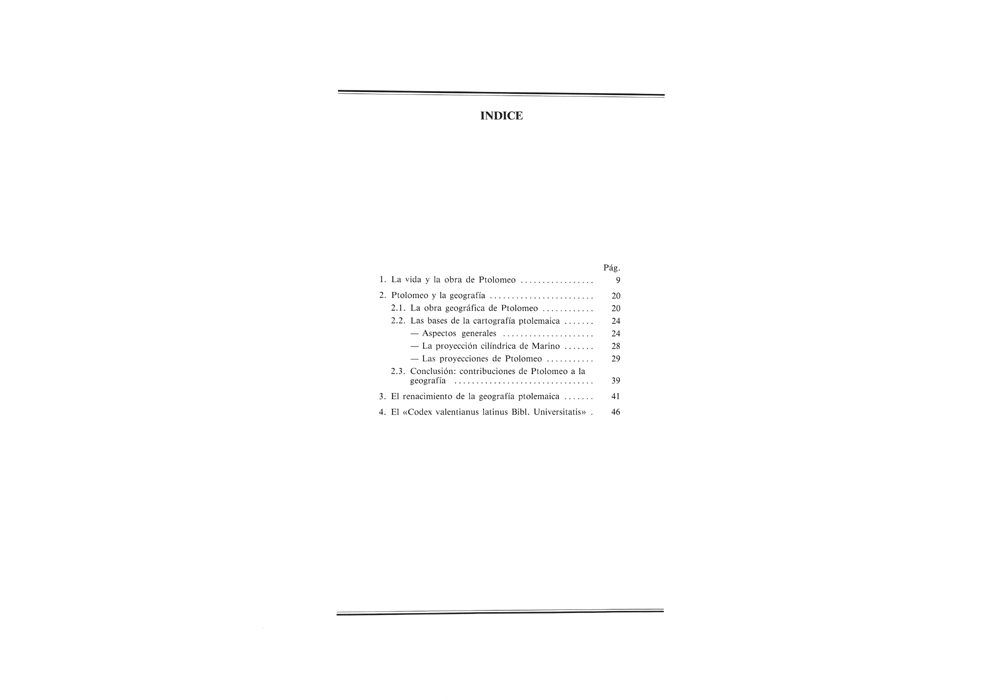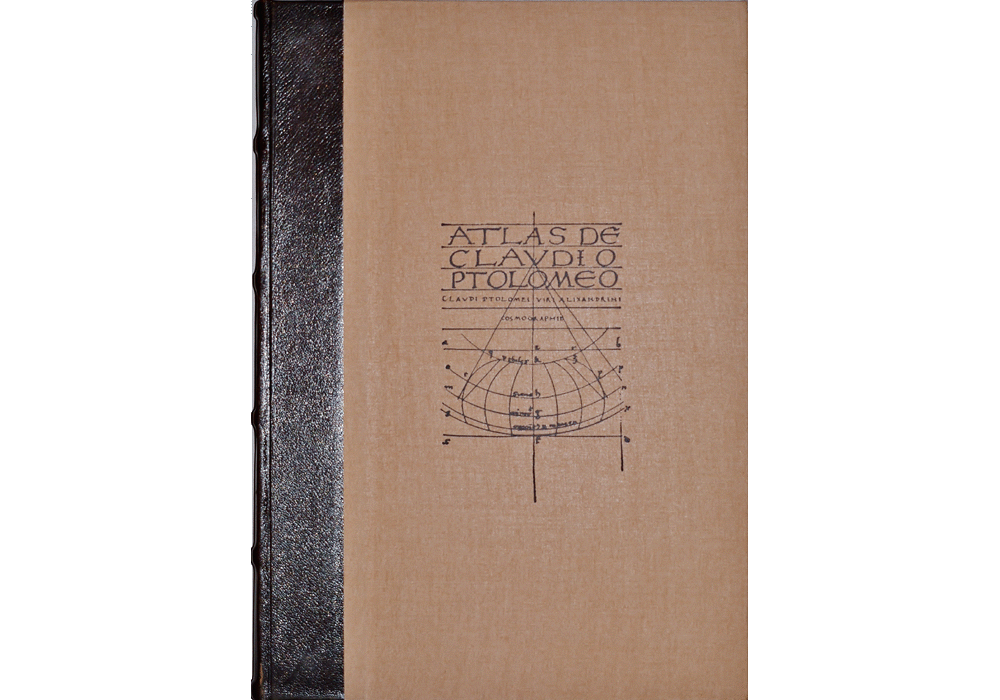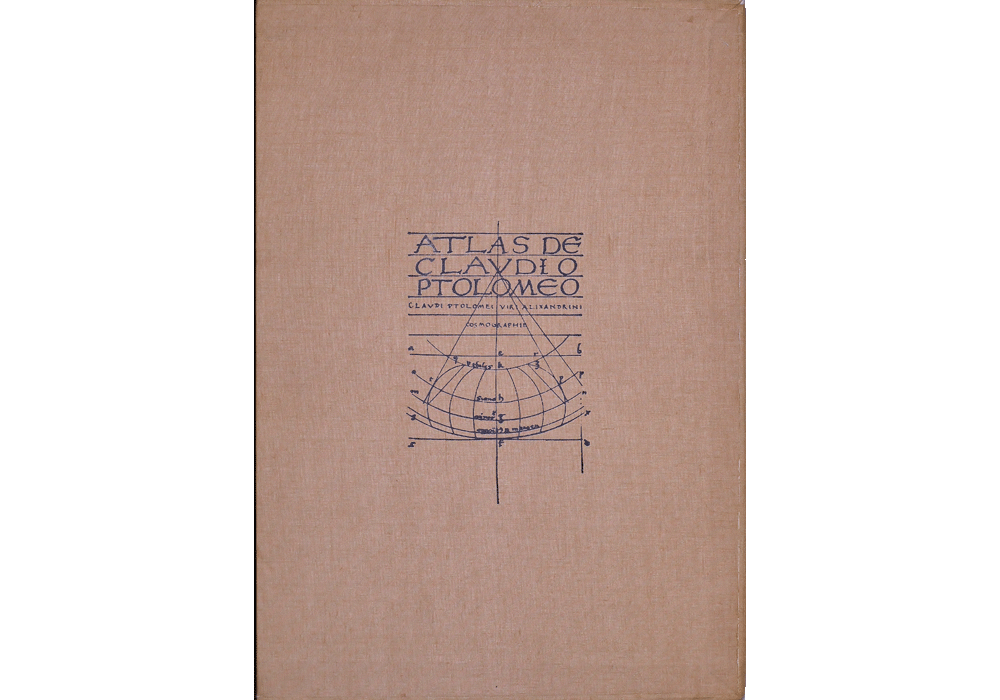|
|
|
| Seguir @vicentgarciaedi Twittear |
|
vgesa |

|
|
|
Synopsis: Claudius Ptolemy, Egyptian astronomer, mathematician and geographer, from the II century of the Christian era, born in Tolemaida Hermia (High Egypt) and lived and worked in Alexandria. Almost rivalling in his ingenuity the great Hiparcus of Nicea and, systematically, hardly surpassed by anybody, possessed the knowledge of antiquity in several scientific fields, extending it in some of them. For astronomers’ use he invented a trigonometry, so complete, that it prevailed throughout the Middle Ages. The manuscript which exists in the Biblioteca Histórica de la Universitat de València was ordered to be copied and illustrated by Alphonse the Magnanimous from the library owned by the King in Castel Nuovo of Naples and was passed on to the Biblioteca de San Miguel de los Reyes. It dates from the XV century, as other copies exist in His Majesty’s Libraries, and in the Bibliothèque nationale de France. The Jesuit priest Jos Fischer, in an article published in the journal "Ibérica" alludes to this manuscript and the mention of Greek or Latin manuscripts existent in the Libraries of Rome, London, Milan, Florence, Naples, Vienna, Munich, Venice, Parma, Modena and Nancy. The editions succeed one another from 1475 to 1845. The Universitat de València's manuscript is of singular beauty, composed of 216 usable pages, except page 104, on two columns and 57 lines. The material employed is vellum. XV century print, with borders illuminated in gold and colour, with an angel holding a crown with a space for a coat of arms, capital letters in gold and colour, red titles and catchwords every ten leaves. The binding is patterned leather, on board and with gilt edges. Besides the manuscript, it contains the geographic and mathematical study of his observations, twenty-seven maps, of which twenty-six are on two pages and the last on one page. |
IBIC Rating: |
||
|
ACN History of art & design styles: c 1400 to c 1600 |
1D Europe
|
|



